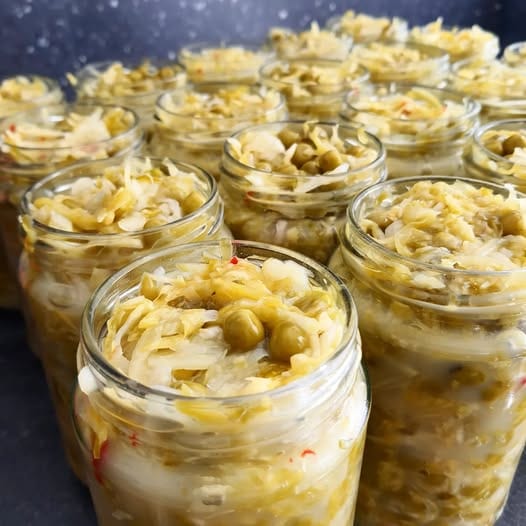
Fennel & Pea Kraut — A Sweet & Spicy Twist on Classic Sauerkraut
Share
I created this ferment for a local restaurant that wanted something a bit fancy - tangy, gently spicy, a little unexpected, and made from locally grown produce.
I’d been experimenting with garden peas in ferments (having found some at my local greengrocer), and this felt like the perfect excuse to try them in a kraut. The result? Fresh, zingy, and slightly sweet — with the added crunch and lift you’d expect from fennel and shallots. This kraut is lively, layered, and absolutely worth a spot in your fridge.
Why Ferment Peas?
Garden peas are naturally sweet, which makes for an especially active and feisty ferment - so keep an eye on your jar. They bring a gentle burst of flavour that holds up beautifully against the more traditional kraut ingredients. They’re also a fun way to use up a glut, especially if you’re growing your own.
The Recipe: Fennel & Pea Kraut
Ingredients:
- 1 white cabbage of your choice (approx. 1 kg)
- 500 g shallots
- 500 g fresh fennel
- 500 g freshly shelled peas (or more, if you want peas to take centre stage)
- 2% salt (total weight of veg x 2% which is around 50 g for the above veg weight)
- 4 tsp chilli flakes or 2–3 fresh chillies, deseeded and thinly sliced
Method:
- Thoroughly wash your veg, utensils and jar
- Thinly slice the cabbage and fennel (save one outer cabbage leaf for later)
- Add your salt and massage until a brine forms
- Add your peas, chillies, and shallots and mix well.
- Pack everything into a clean jar, pressing down firmly to eliminate air pockets. Make sure the veg is fully submerged in brine.
- Use the reserved cabbage leaf to cover the surface, then add a weight (like a glass jar or ramekin) to keep everything below the brine.
- Leave to ferment at room temperature for 7–14 days, depending on your kitchen temperature.
- Taste around day 7. If it’s tangy enough, you can move it to the fridge. If not, leave it out for a few more days until it suits your taste.
- Once fermented to your liking, transfer to smaller jars, seal, and store in the fridge.
Tips & Notes:
- Don’t worry too much about sticking exactly to the quantities — if you love fennel, add more fennel. If you’re a spice fan, dial up the chilli.
- Peas are naturally sweet, so your kraut might be feistier than usual. Keep your jar on a saucer to mop up any overflowing brine.
- This is a great kraut to pair with grilled meats, cured fish, or even a sharp cheddar sandwich.
I’ve tried a few different pea ferments over the years — so if this one hits the spot for you, don’t stop here. Try a pea, chilli & lime combo for something punchy, or go all in on the peas (no cabbage) with fresh Thai basil, baby turnips, radish, shallots and chilli. It’s a surprisingly versatile base that plays well with sweet, sour, and herbal flavours.
New to Fermenting?
If you’re new to all this, this recipe assumes some prior fermentation knowledge. You might want to start with my Naked Kraut tutorial, which walks you through the basics step-by-step.
Let me know if you make it — or if you’ve ever fermented peas before. I’d love to hear how it turned out!
